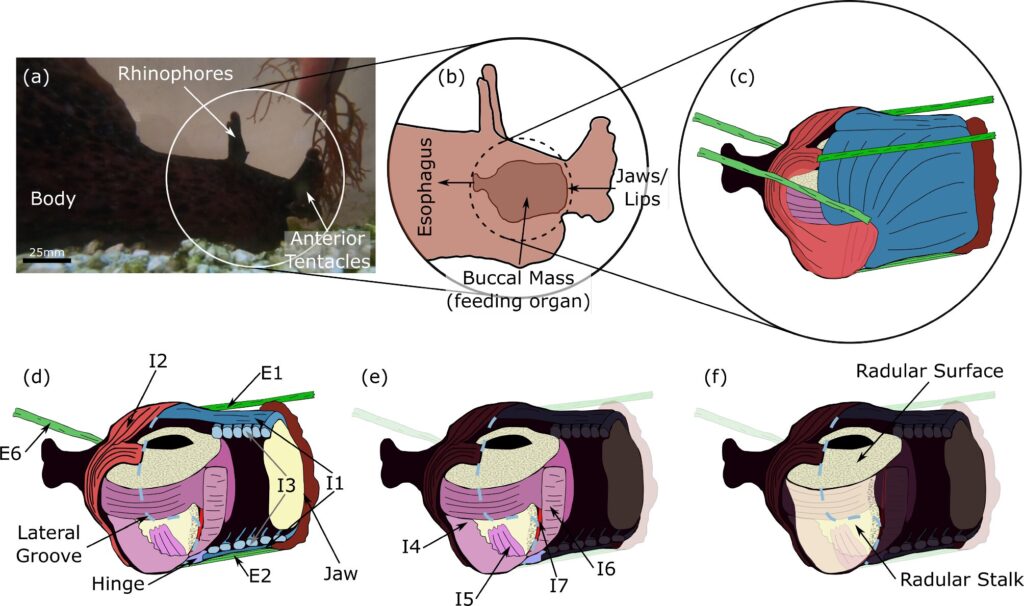When designing new robots, engineers often look to nature for inspiration. They base their robots on the designs and behaviors of snakes, fish, humans, and more, such as sea slugs, whose feeding behaviors have been studied in recent research by the Carnegie Mellon University Biohybrid and Organic Robotics group under the direction of Vickie Webster-Wood, associate professor of mechanical engineering.
The researchers are studying these blobby little sea creatures (scientifically named Aplysia californica) to better understand how their nervous systems interact with their muscles while they feed, particularly while they bite nearby food, swallow that food, or reject that food by spitting it up. The researchers hope to use these insights to help them design soft robots with no rigid parts.
In some of their latest research, published in the journal Biological Cybernetics, the researchers studied how those feeding behaviors are generated and how they arise from the slugs’ anatomy.
They created a computer model of the slug mouth and aimed to mimic what they observed in the animals. Previous models have used one-dimensional structures, like masses on springs, to approximate the muscle movements, but this project utilized two-dimensional structures to better reflect how the muscles’ shapes changed over the course of the behaviors.
“We try to find the key landmarks in the buccal mass [mouth] where we know how those positions move and change shape during the behavior,” explained Michael Bennington, a Ph.D. student in Webster-Wood’s lab and first author on the paper.
“Instead of depicting the mouth in one dimension, the computer model uses a rectangle encasing the shape of one of the muscles, and we know where that rectangle’s four corners are. Additional muscles can interconnect at those points.”
This more detailed approach allowed the researchers to capture greater degrees of freedom, which in turn allowed them to better reflect how the muscles move throughout the behaviors.
“We are moving toward better capturing the mechanics of the system,” Bennington said.
In their results, they also found some new ways to improve their models. There are two parts to the slug’s buccal mass: the lumen, or opening in the slug’s jaws, and the grasper, which grabs the food through the lumen and then retracts to swallow. (“If you’ve ever seen the movie ‘Alien,’ it’s a bit like the mouth of that creature,” Bennington said.) A structure called the hinge connects these two parts, allowing the grasper to rotate within the buccal mass.
Despite its name, the hinge is not like the hinge of a door, but is a three-dimensional structure that is anchored at multiple points—instead, it is as if a door were hinged on three sides instead of one. The researchers found that their current two-dimensional model doesn’t adequately capture the hinge’s function, so moving forward, they will focus on better modeling the hinge to capture the three-dimensional mechanics of the system.
Webster-Wood’s lab focuses on research involving soft robotics, biohybrid robotics, and bio-inspired robotics. The group, known as the CMU Biohybrid and Organic Robots Group (BORG), aims to use robots to help us better understand biological systems, and use biological organic materials to build more adaptable and sustainable soft robots. Soft-body systems can be difficult to control due to their much greater degrees of freedom than rigid systems, but the researchers know they are nearing the limits of tools developed for rigid systems.
This project was not their first involving the slugs; they have published several papers based on insights from A. californica, including creating a mechanical robot to model the slugs’ behaviors, called SlugBot.
Bennington was also involved in developing SlugBot, which is how he began working with the slugs. “One of the cool things about this lab is we don’t just use computational and mathematical models to describe something, but we try to actually use physical models as well,” he said.
The squishy slugs are an ideal model organism for these projects because they generate interesting behaviors with a relatively small number of neurons and muscles; only around a dozen muscles and 4,000 neurons are involved in feeding. (For reference, according to some estimates, humans’ brains contain 86 billion neurons.)
As soft robotics technologies improve, these insights will help researchers simulate and learn about other soft-body systems.
More information:
Michael J. Bennington et al, Incorporating buccal mass planar mechanics and anatomical features improves neuromechanical modeling of Aplysia feeding behavior, Biological Cybernetics (2025). DOI: 10.1007/s00422-025-01017-1
Citation:
Sea slug research advances soft robotics (2025, August 14)
retrieved 15 August 2025
from https://techxplore.com/news/2025-08-sea-slug-advances-soft-robotics.html
This document is subject to copyright. Apart from any fair dealing for the purpose of private study or research, no
part may be reproduced without the written permission. The content is provided for information purposes only.

